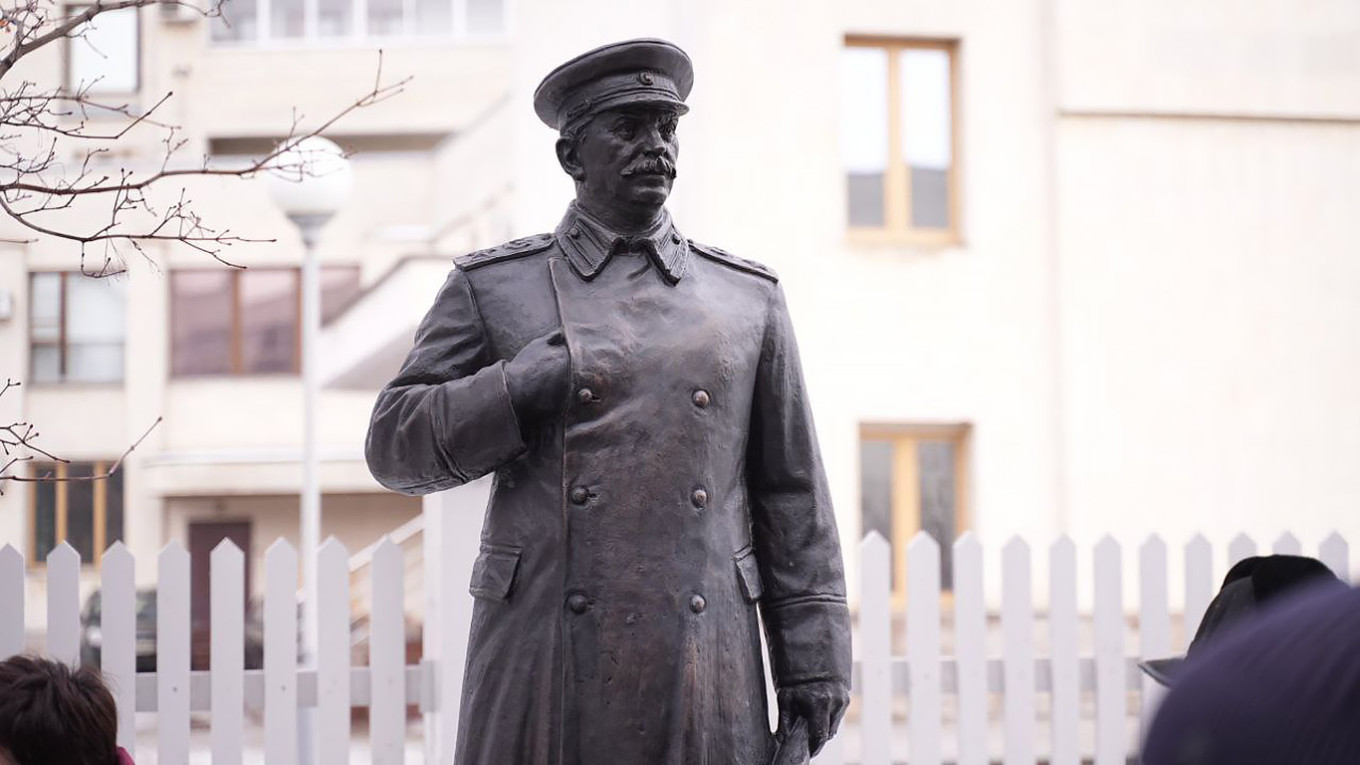
The Greek Courier
Source: The Moscow Times
A staggering number of Joseph Stalin's statues are making a comeback in Putin's Russia, with the latest installation gracing the Moscow Metro. But what’s behind this resurgence?
Moscow’s Metro has reinstalled a replica of a monument to Soviet dictator Josef Stalin, intensifying discussions about Russia's ongoing rehabilitation of his image under President Vladimir Putin. This move is not unexpected; when Putin took office at the turn of the millennium, only a few Stalin monuments existed across Russia. Currently, there are over 100 scattered throughout major cities and remote areas.
The life-sized bas-relief was first unveiled in 1950 at Taganskaya Station but was taken down in the 1960s during the Soviet Union's de-Stalinization efforts. The removal made space for a new transfer corridor, and the original sculpture is thought to have been destroyed.
According to a statement from Moscow’s Metro, “Experts are recreating the composition from archival photographs and documents, with plans to complete the work soon.”
The monument was officially unveiled on Thursday, following last week’s Victory Day celebrations and coinciding with the 90th anniversary of the Moscow Metro, which opened during Stalin's rule.
Stalin Monument Unveiled in Russia’s Vologda Region
Architectural historian Alexander Zinoviyev said several key elements of the original relief were not preserved in the recreation, including the ceramic panel

In December 2023, authorities in the Vologda region unveiled another statue of Stalin, marking the latest addition to the growing number of monuments dedicated to the dictator. Vologda Governor Georgiy Filimonov described the statue as “a step toward a sober, balanced view” of Russia’s history. Just hours prior, he had honored victims of political repression at a local memorial.
Filimonov remarked on Stalin’s significant role in shaping Russian history, acknowledging both the tragedies and triumphs of his rule. He emphasized the importance of preserving Stalin’s legacy for future generations to maintain Russia’s strength.
The statue, crafted by sculptor Konstantin Kubyshkin, is located near the Vologda Exile House Museum, where Stalin lived briefly in 1911-1912. Earlier this year, Filimonov, who prominently features portraits of Communist leaders in his office, also announced plans for a monument to Tsar Ivan the Terrible.
Stalin’s image has gradually been restored in Russia, despite the severe atrocities committed during his regime. Since Putin’s presidency began in 2000, nearly 100 Stalin monuments have been erected, especially in North Ossetia, Dagestan, and Sakha (Yakutia). Recently, a bust was unveiled in North Ossetia, and another in Nakhodka.
Not all memorials have been well-received; earlier this year, a Stalin statue in Zvenigorod was vandalized. Architectural historian Alexander Zinoviyev noted that the recent recreations often lack key elements of the originals, describing them as more ideological gestures than true historical restorations.
Despite Stalin's brutal purges, his presence in public spaces has increased in recent years. Independent estimates indicate that 105 of Russia’s 120 Stalin monuments were erected during Putin's 25 years in power. Putin has even suggested the possibility of renaming Volgograd back to Stalingrad, a change long supported by Communist party leaders.
The name “Stalingrad” is already used temporarily during national holidays and wartime anniversaries.
Analysis
When Putin assumed the presidency, only a few Stalin monuments existed in Russia. Now, with over 100 and more being unveiled annually, particularly during Victory Day, Stalin's imagery is becoming a fixture in contemporary Russian life.
This revival of the Stalinist cult of personality reflects a broader trend. Positive depictions of Stalin were largely eradicated under Nikita Khrushchev and again in the 1990s, as archives opened and discussions about the past highlighted his role in Soviet crimes. Now, his image is pervasive.
The state appears to be driving this resurgence, potentially to influence public sentiment. For over a decade, school curricula have increasingly portrayed Stalin positively, transforming him from a repressive figure into a national hero who led the Soviet Union to victory in the Great Patriotic War, thereby becoming a central element of Putin's historical narrative.

No comments:
Post a Comment